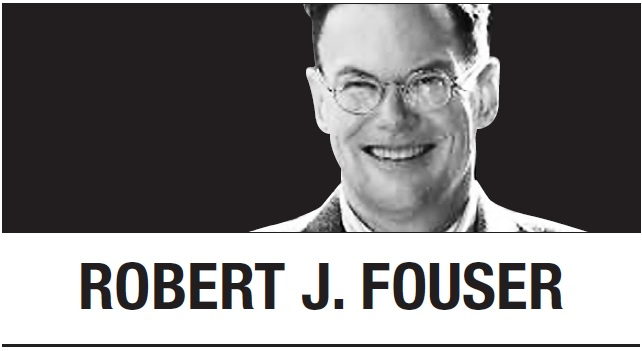[Robert J. Fouser] The shifting conversation about cities
By Korea HeraldPublished : Nov. 17, 2023 - 05:27

As we move deeper into the 2020s, it feels like the 2010s are fading into history. Among the many trends of the 2010s, interest in cities boomed, sparking an “urban rediscovery” in much of the developed world. Slick magazines like Monocle and Kinfolk portrayed cities as hip playgrounds for in-the-know youth. In South Korea, conversational walks in older neighborhoods became a trend just as social media took off. Social media posts of retro streetscapes dotted with new cafes suddenly made previously unknown areas like Seochon and Seongsu-dong famous.
Soon, media attention from bloggers and the mainstream media followed, turning a trickle of interest into a boom. To capitalize on the boom, young entrepreneurs began converting old buildings into hip cafes, bars and shops. They used the retro atmosphere to create a new and trendy “newtro” sensibility. As an area grew in popularity, rising rents and rapid commercialization pushed out the early entrepreneurs and longtime residents. This created a South Korean form of gentrification centered on commercialization, much of which took place in predominantly residential areas.
At the same time, many of these neighborhoods in large cities had plans, in various stages, for “redevelopment” in the form of housing. In South Korea, this means demolishing the entire area and building new apartment complexes in its place, forcing all residents to move. By the mid-2010s, with many older neighborhoods threatened by commercial gentrification and demolition, local governments began to develop “urban renewal” policies. There have been some success stories, but overall they have failed to revitalize the areas, many of which are now seeing apartment construction.
In the developed world, Korean-style demolition redevelopment is harder to find, but gentrification, driven by skyrocketing housing costs, caused widespread dislocation in the 2010s. In the United States, city living became popular with the large millennial population as they entered the workforce. Among major European cities, gentrification was particularly severe in London and Paris, while many other cities suffered from overtourism-induced gentrification.
Fast forward to the present, the mid-2020s, and the situation has changed, largely due to the COVID-19 pandemic that began in early 2020. The rapid spread of a dangerous disease that attacks the lungs forced people to limit their gatherings, but because cities are where people gather, the overall impact was severe. New York and San Francisco, which had been booming for most of the 2010s, suddenly lost population. Working from home and changing consumption patterns drastically reduced foot traffic in commercial centers. Cities suffering from overtourism got a reprieve, but their economies suffered, hurting the working class the most.
When the pandemic subsided in 2022, life returned to normal, and so did cities. But history doesn’t go backward, so the era of urban rediscovery has not come back.
So where do cities stand today? In many developed countries, including South Korea, the population is aging, and fewer young people are looking for “hip” things to do. The young people of the 2010s who flocked to hip cafes and bars are now busy starting families and building careers, making it difficult to stop by the latest craft brewery on a whim.
In South Korea in the 2010s, urban exploration was popular with people of all ages, but what was new then is not new now. Changing attitudes during the pandemic have sparked a new interest in nature. As a result, natural spaces in cities, especially those that are good for walking, have become increasingly popular. Local governments have developed many walking parks along streams, at the foot of mountains, and on abandoned railroad tracks.
More importantly, the 2020s have seen an increase in the number of climate-related natural disasters. This has raised awareness of the vulnerability of existing urban infrastructure. Few cities are prepared to deal with regular flooding, forest fires, or intense tropical cyclones. To date, climate change policy has focused primarily on the urgent need to reduce carbon emissions, but more attention is being paid to the need for cities to adapt to the reality of climate change through investment in infrastructure.
As awareness of the costs and dangers of climate change grows, the focus has shifted to making cities sustainable places to live. How can they reorganize themselves to reduce carbon emissions and mitigate the human impacts of climate change? How will they finance massive investments in new infrastructure? These are tough questions that will dominate discussions about cities in the 2020s and beyond.
Robert J. Fouser
Robert J. Fouser, a former associate professor of Korean language education at Seoul National University, writes on Korea from Providence, Rhode Island. He can be reached at robertjfouser@gmail.com. -- Ed.
-
Articles by Korea Herald



















![[Today’s K-pop] Treasure to publish magazine for debut anniversary](http://res.heraldm.com/phpwas/restmb_idxmake.php?idx=642&simg=/content/image/2024/07/26/20240726050551_0.jpg&u=)